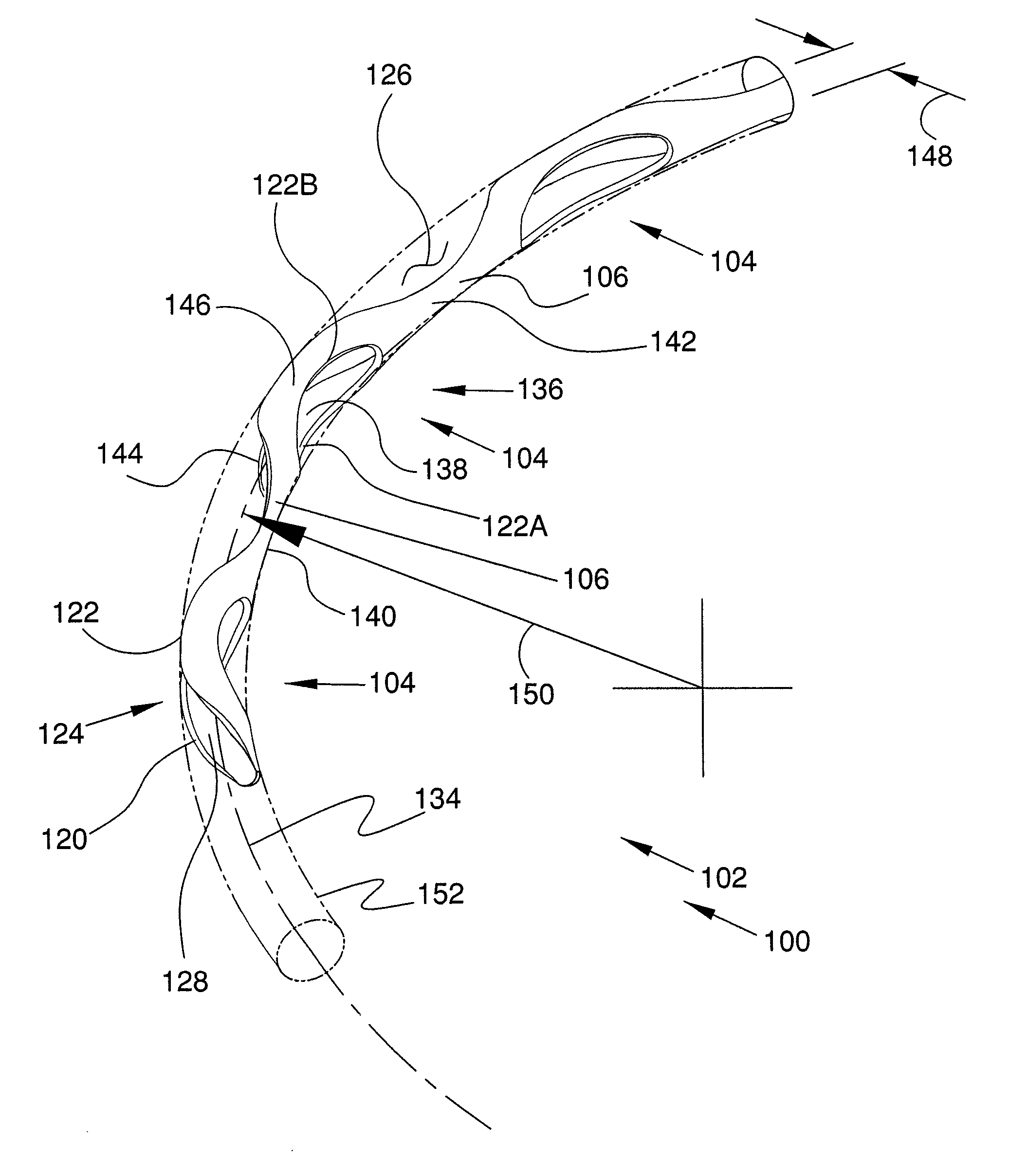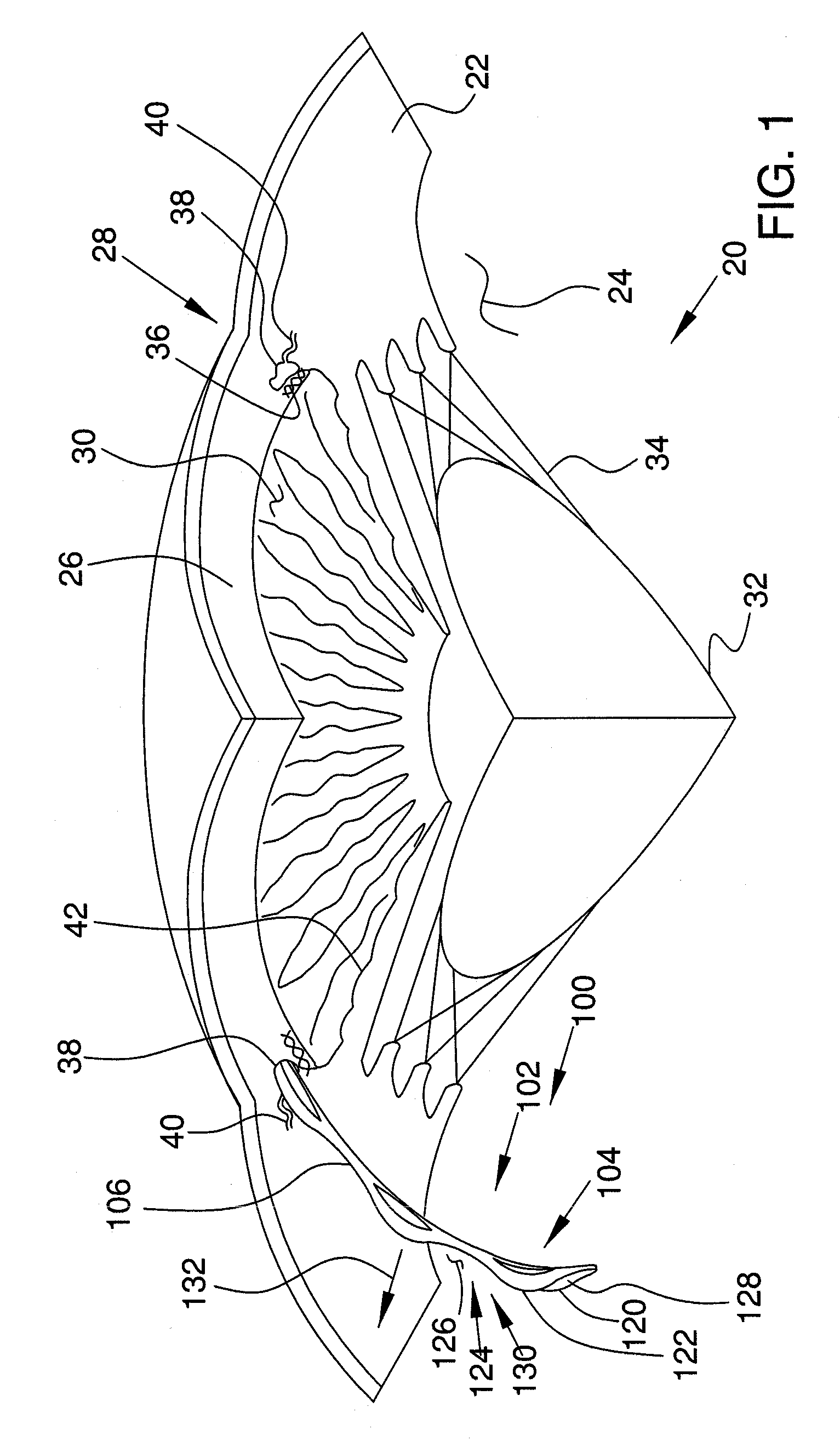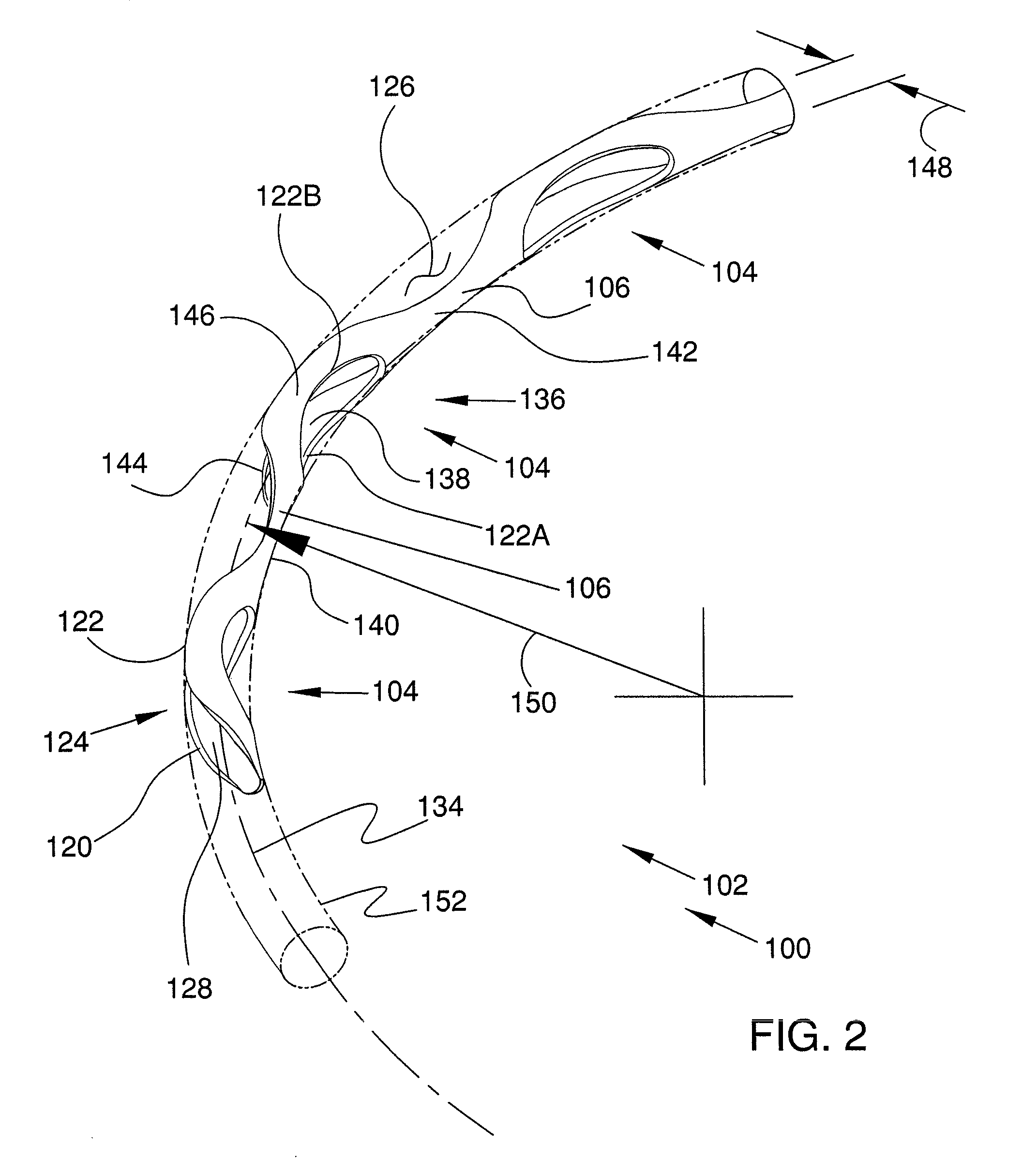Ocular implants with asymmetric flexibility
a technology of ocular implants and flexible parts, applied in the field of devices, can solve the problems of asymmetric flexibility, relatively high fluid flow rate at or around any portion of the device, and prior devices failed to recognize the importance of supporting a significant portion of schlemm's, so as to encourage a safe healing response over time
- Summary
- Abstract
- Description
- Claims
- Application Information
AI Technical Summary
Benefits of technology
Problems solved by technology
Method used
Image
Examples
Embodiment Construction
[0038]FIG. 1 is a stylized perspective view depicting a portion of a human eye 20. Eye 20 can be conceptualized as a fluid filled ball having two chambers. Sclera 22 of eye 20 surrounds a posterior chamber 24 filled with a viscous fluid known as vitreous humor. Cornea 26 of eye 20 encloses an anterior chamber 30 that is filled with a fluid know as aqueous humor. The cornea 26 meets the sclera 22 at a limbus 28 of eye 20. A lens 32 of eye 20 is located between anterior chamber 30 and posterior chamber 24. Lens 32 is held in place by a number of ciliary zonules 34.
[0039]Whenever a person views an object, he or she is viewing that object through the cornea, the aqueous humor, and the lens of the eye. In order to be transparent, the cornea and the lens can include no blood vessels. Accordingly, no blood flows through the cornea and the lens to provide nutrition to these tissues and to remove wastes from these tissues. Instead, these functions are performed by the aqueous humor. A contin...
PUM
 Login to View More
Login to View More Abstract
Description
Claims
Application Information
 Login to View More
Login to View More - R&D
- Intellectual Property
- Life Sciences
- Materials
- Tech Scout
- Unparalleled Data Quality
- Higher Quality Content
- 60% Fewer Hallucinations
Browse by: Latest US Patents, China's latest patents, Technical Efficacy Thesaurus, Application Domain, Technology Topic, Popular Technical Reports.
© 2025 PatSnap. All rights reserved.Legal|Privacy policy|Modern Slavery Act Transparency Statement|Sitemap|About US| Contact US: help@patsnap.com



